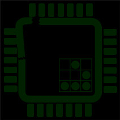There are 10 new UEFI/Tianocore Security Advisories, 32-40. I don’t see 10 new CVEs, though…
32. DNS Packet Size Check: Buffer overflow in network stack for EDK II may allow unprivileged user to potentially enable escalation of privilege and/or denial of service via network.
https://edk2-docs.gitbooks.io/security-advisory/content/dns-pack-size-check.html
33. Opal BlockSid Setting Disabled after S3: Improper configuration in system firmware for EDK II may allow unauthenticated user to potentially enable escalation of privilege, information disclosure and/or denial of service via local access.
https://edk2-docs.gitbooks.io/security-advisory/content/opal-blocksid-setting-disabled-after-s3.html
34. PartitionDxe and Udf Buffer Overflow: Buffer overflow in system firmware for EDK II may allow unauthenticated user to potentially enable escalation of privilege and/or denial of service via network access.
https://edk2-docs.gitbooks.io/security-advisory/content/partitiondxe-and-udf-buffer-overflow.html
https://nvd.nist.gov/vuln/detail/CVE-2019-0160
35. Stack Overflow on Corrupted BMP: Stack overflow in corrupted bmp for EDK II may allow unprivileged user to potentially enable denial of service or elevation of privilege via local access.
https://edk2-docs.gitbooks.io/security-advisory/content/stack-overflow-on-corrupted-bmp.html
36. Buffer Overflow in BlockIo service for RAM disk: Buffer overflow in BlockIo service for EDK II may allow an unauthenticated user to potentially enable escalation of privilege, information disclosure and/or denial of service via network access.
https://edk2-docs.gitbooks.io/security-advisory/content/buffer-overflow-in-blockio-service-for-ram-disk.html
37. XHCI stack local stack overflow: Stack overflow in XHCI for EDK II may allow an unauthenticated user to potentially enable denial of service via local access.
https://edk2-docs.gitbooks.io/security-advisory/content/xhci-stack-local-stack-overflow.html
38. SW SMI Confused Deputy SmramSaveState.c: Insufficient memory write check in SMM service for EDK II may allow an authenticated user to potentially enable escalation of privilege, information disclosure and/or denial of service via local access.
https://edk2-docs.gitbooks.io/security-advisory/content/sw-smi-confused-deputy-smramsavestate_c.html
39. Unlimited FV Recursion: Stack overflow in DxeCore for EDK II may allow an unauthenticated user to potentially enable escalation of privilege, information disclosure and/or denial of service via local access.
https://edk2-docs.gitbooks.io/security-advisory/content/unlimited-fv-recursion.html
40. AuthVariable Timestamp Zeroing on APPEND_WRITE: Logic issue in variable service module for EDK II/UDK2018/UDK2017/UDK2015 may allow an authenticated user to potentially enable escalation of privilege, information disclosure and/or denial of service via local access.
https://edk2-docs.gitbooks.io/security-advisory/content/authvariable-timestamp-zeroing-on-append_write.html






You must be logged in to post a comment.